The southeast Nigerian state of Anambra is derived from Omambala, the Igbo name of the Anambra River, a tributary of the River Niger, which runs through the region. Awka serves as the nation’s capital and seat of power. The state was created in 1976 from the former East Central State.
Meanwhile, Omambala’s anglicized name is Anambra. However, the names Anam and branch were combined to create the name Anambra. This is because the last Igbo-speaking community the British colonialists encountered as they travelled up to Northern Nigeria from across the riverine territories was the Anam clan, which is located in the Omambala region. They frequently referred to modern-day Anambra as the “Anam branch” to their northern colleagues. Anambra LGA was established since it included Anam and a few nearby clans.
Delta State, Imo State, Rivers State, Enugu State, and Kogi State serve as the states’ western, eastern, southern, and northern borders, respectively. The Igbo (98 per cent of the population) and the minor Igala (2 per cent of the population) indigenous ethnic groups in Anambra state are both concentrated in the state’s northwest.
Anambra is the second-most densely populated state in Nigeria. Thus, it is the eighth most populous state in the Federal Republic of Nigeria. There are numerous densely populated villages and small towns spread out over the more than 45 kilometres between the cities of Oba and Amorka, giving the region an estimated average density of 1,500–2,000 people per square kilometre.
In this piece, Naijabiography explores the history of Anambra State, the culture and tradition of the Anambra people, their belief system, and trades.
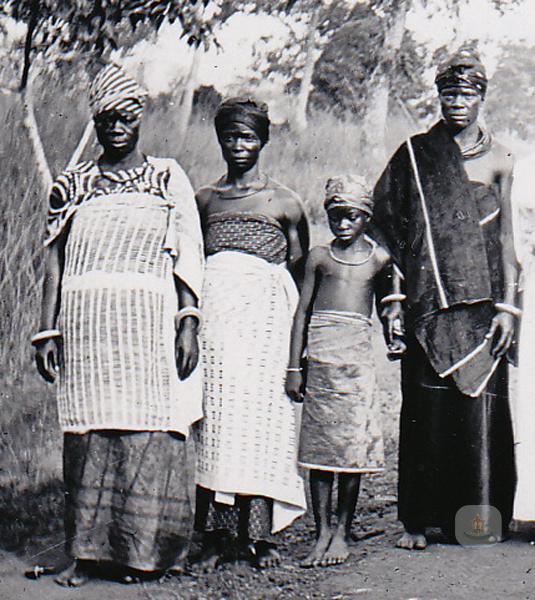
History
Research reveals that the Igbo-Ukwu and Ezira have indicated that Anambra’s history dates back to the 9th century AD. Great works of pottery, as well as iron, bronze, and copper art, can be found there. These have exposed a complex divine kingship government that ruled over the Anambra region from 948 AD to 1911. Local lineages in some towns, like Ogidi and others, have had hereditary claims to the kingship for generations.
The history of Anambra, however, dates back to the 9th century. Local lineages have held hereditary royal titles for generations in some regions, such as Ogidi. The Nri kings were regarded as legitimate emperors since they were subject to British control. These honourable leaders were appointed as Warrant Chiefs in the 19th century, collecting taxes and doing other tasks.
Anambra is located in the Igbo-dominated region that broke away from Biafra in 1967 as a result of escalating hostilities with Northern Nigeria. In the village of Uli/Amorka, Biafran engineers built a relief airfield during the Nigerian/Biafran conflict (1967–1970).
Meanwhile, Sao Tome and other locations saw the launch of extremely risky relief flights that carried tons of food and medicine for the suffering Biafran populace. American pilots like Alex Nicoll and dozens of others transported tons of humanitarian supplies to the Biafran inhabitants from the Uli/Amorka airfield.
Engineers from Biafra built “Annabelle” as a temporary airfield during the civil war. Carl Gustaf von Rosen quit as a Red Cross relief pilot out of disgust over the suffering and rising famine death toll in Biafra as well as the harassment of the rescue flights by the Nigerian Airforce. However, he assisted Biafra in establishing an air force consisting of five Mini coin Malmö MFI-9 aircraft stationed at the Uga airfield.
Therefore, it was utilized to provide the Biafran inhabitants with food and medication. Delivering aid to the starving Biafran people on this airstrip, where Nigerian planes were constantly harassing them, American pilots like Alex Nicoll gave their lives in the name of humanity. However, in honour of the infants that perished from malnutrition inside Biafra, he gave his small but effective air force the name “Babies of Biafra.”
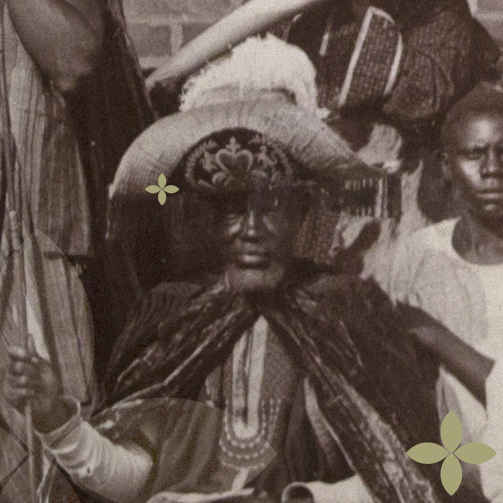
Anambra State’s history may be divided into two eras; old Anambra State was established in 1976 from a portion of East Central State. Enugu served as its capital. It underwent reorganization on August 27, 1991, when it was split into the states of Anambra and Enugu. Anambra State was formed in 1991 by separating the Old Anambra State from the Nigerian federation.
Awka, the home of Igbo blacksmiths and the current capital of Anambra, has 21 local government areas. According to the census, 4,177,828 individuals made up Anambra State’s population in 2006. There is 4,844 km2 of land. In addition, there are about 177 independent communities in it. The state with the most rapidly expanding cities in Anambra. The state government has designated 10 towns as urban areas.
General John Atom Kpera, who was born in 1941, served as Anambra State’s first military governor from 1976 to 1978. He served as governor during General Olusegun Obasanjo’s administration. General John Atom Kpera attempted to put into effect a policy requiring residents to perform city cleaning tasks while being watched over by soldiers. He said that he left the state treasury empty since he was empty when he began his rule after being removed from the office of governor.
Economy
Natural gas, crude oil, bauxite, and ceramics are all abundant in Anambra. Nearly all of the earth is arable. Anambra has a wealth of additional resources for agro-based pursuits, including fishing and farming, as well as land used for grazing and animal husbandry.
The first commercial refinery in Nigeria, Orient Petroleum Refinery (OPR), had its foundation laid in the Aguleri region in the year 2006. The Federal Government granted a building permit to The Orient Petroleum Resource Ltd (OPRL), owner of OPR, in June 2002 for the construction of a private refinery with a 55,000 barrel per day (7,500 t/d) capacity. However, Anambra State started producing oil in 2012 as a result of the efforts of Governor Peter Obi and other Orient Petroleum players. The Anambra River basin is where the indigenous firm discovered oil.
As it started production efforts in two new oil wells in its Aguleri oil fields, Orient Petroleum Resources Plc’s management announced on August 2 that the business aimed to expand its crude oil production to 3,000 barrels per day by September 2015. To promote economic operations in the oil and gas industry in the state, Nails and Stanley Ltd, an indigenous company, planned to build a gas plant at Umueje in the Ayamelum Local Government Area.
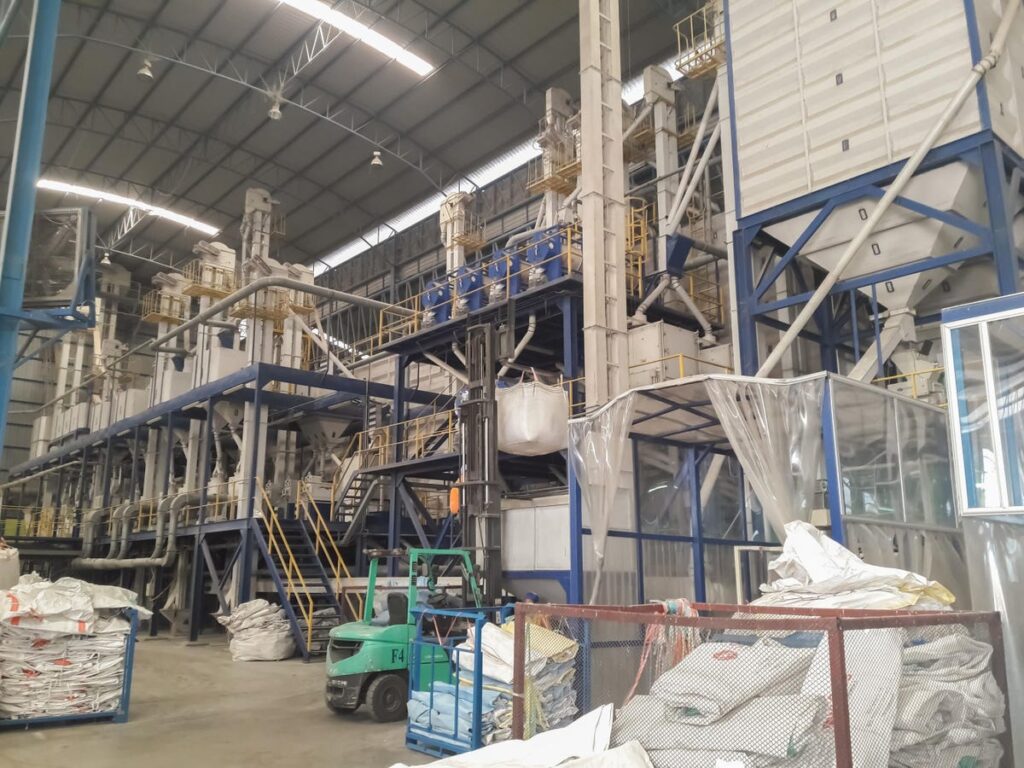
In Anambra, agriculture is a significant economic sector. Among the crops produced are oil palms, yams, cassava, maize, and rice. In addition, Anambra, aside from commercial farming, also values fishing as a trade, which has contributed to its economic development.
Furthermore, the first automobile company in Nigeria, Innoson, is based in Nnewi, in Anambra state. The automobile is one of the best-selling cars that are made in Nigeria.
The fact that traders from all over West Africa flock to Onitsha to do business, especially to buy products like clothes, accessories, and even automobiles, helps the state’s internal revenue, making it one of the most prosperous commercial hubs in all of Africa.
Anambra State is endowed with innovation, inventiveness, and creativity. Also, as a result of Anambra’s appreciation of education, which has raised the state’s GDP, there have been several inventions. Atikpo Chukwuebuka and Ubaka Chukwuebuka, two brothers, were the first to create a device that could remove the bitterness from bitter leaves in 2018. (a highly nutritious vegetable). The state’s vegetable-growing productivity increased significantly as a result of this machine.
Anambra’s internally generated revenue has consistently been boosted because of the increase in the sales of agricultural products. For example, in 2017, the export of washed bitter leaf brought in $5 million.
Nigeria has sizable oil and gas reserves, with the Anambra Basin holding the potential for 1,000 trillion cubic feet of new gas reserves. Anambra state has the ability to produce more than 100,000 barrels of crude oil per day thanks to its more than 13 oil wells, and local firms like Orient Petroleum and Sterling Oil Exploration and Production Co. LTD (SEEPCO) are already setting the pace.
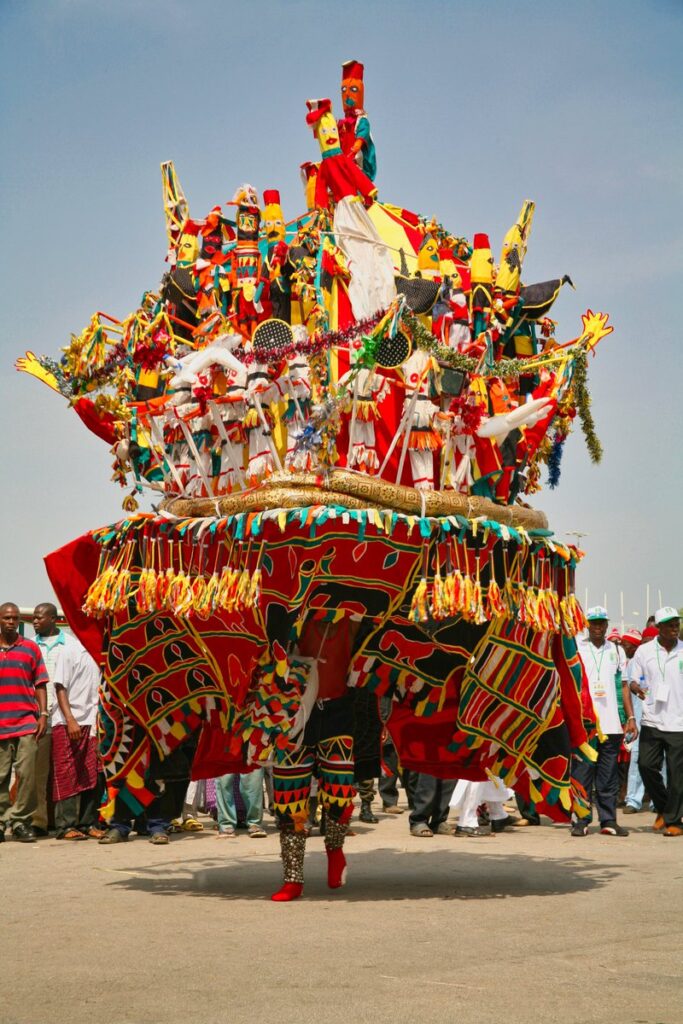
Anambra’s Cultural Festivals
Anambra celebrates a number of the most popular and entertaining Igbo and Nigerian festivals, including the Ofala, the New Yam, the Igbo New Year, the Masquerade Festival, and others. Some of the famous festivals celebrated by the Anambra are explained below;
Onitsha Ofala Festival
The Onitsha kingdom has a long-standing custom known as the Ofala celebration. Once a year, in October, Ofala is observed to mark the conclusion of the New Yam. The Obi’s subjects had a chance to see him and show their respect for him during the Ofala. The Obi retreats into solitude for four days prior to the event. He withdraws to pray for peace and prosperity for the upcoming year and to speak with his ancestors in order to express his gratitude for their protection of him and his subjects over the previous year. The Obi makes his appearance during the Ofala at the conclusion of the retreat to bless his subjects and offer prayers for the neighbourhood.
Igu Aro Festival
The yearly Igu Aro festival is held in Enugu Ukwu to mark the beginning of the planting season. One of the most vibrant and widely observed festivals in Igbo land, particularly in Umueri, is the Aro celebration, also known as the “Igu aro.” Due to its economic significance, the festival occupies a prominent place in people’s lives. Some of the communities in Anambra have Igu Aro festivities to usher in the annual planting season.

The Afiaolu Nnewi Festival
Afiaolu (New Yam Festival) is a customary celebration that takes place every year in Nnewi around August. On “Eke” day, the Afiaolu festival begins with what is historically referred to as “IWAJI” and “Ikpa Nku,” which announces the arrival of a new yam and expresses gratitude to God. The celebration features a range of entertainment, such as the Igwe (king) performing ceremonial rites, traditional dance, and a masquerade dance and display.
Imo Awka Festival
One of the most important cultural events in Anambra and Nigeria is Imoka (Imo Awka). The Imoka Festival is typically held in Awka, the capital of Anambra State, between May and June of each year. Natives of Awka have a high appreciation for the Imoka celebration. The “Imoka” festival is when locals in Awka honour a deity who was originally thought to be the defender and preserver of all local residents and villages. It typically occurs in the first month of the year or the fifth month in the Gregorian calendar.
Agulueri Ovala Festival
On the first Eke market day of the year in Aguleri, a royal festival called the Ovala festival is held. The highlight and star of the royal year in Aguleri is the Ovala celebration, which draws luminaries from all walks of life. The Eze Idigo of Aguleri celebrates it as the most renowned and well-known traditional celebration in the community, with purposes including commemorating his reign and bringing in the new year.
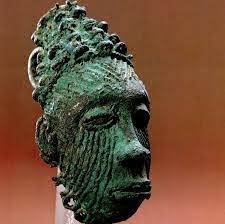
Culture and Tourism
Onugbu soup, a well-known delicacy from the state of Anambra, as well as hamburgers, sharwarmas, and spicy Chinese white soups, are just a few of the delicious foods available there.
One of the most popular tourist attractions in Anambra State is the Ogbunike Caves, which is classified by UNESCO as a World Heritage Site. The cave is categorized as a sandstone cave (Lateritic sandstones of Campanian-Miocene age). The state’s top tourist attractions are the caves and waterfalls in Owerre Ezukala. The caves, which remain largely unexplored, are thought to be the biggest in West Africa.
Igbo Ukwu Museum is located in Igbo Ukwu, a historic town that continues to draw visitors to see its bronze treasures and is renowned for its amazing metal crafts. The bronzes were discovered in 1938 and afterwards dug up by Thurstan Shaw (an English archaeologist). They have significant historical value and have been dated to the ninth century.
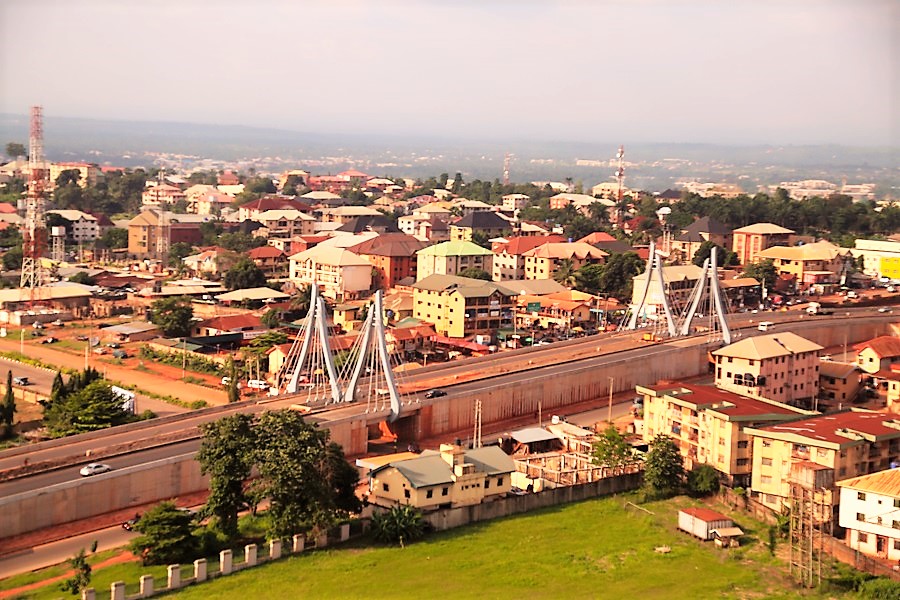
Modern-Day Anambra State
After a competitive race against Chris Ngige, a former governor of the state, Prof. Charles Soludo, a former governor of the Central Bank of Nigeria, and Andy Uba, a prominent figure in the state’s politics, Peter Obi was elected governor for a second term of four years on February 6, 2010.
Meanwhile, Mrs Uche Ekwunife, Prince Nicholas Ukachukwu, and numerous others were also competitors. There were 25 candidates running for the position. Obi was declared the election’s victor after receiving more than 30% more votes than the next-in-line runner-up.
After winning the election on November 16, 2013, Chief Willie Obiano was sworn into office on March 17, 2014. Following the victory in the 18 November 2017 elections, Governor Willie Obiano of the All Progressives Grand Alliance (APGA) was sworn in for a second term in office on March 17, 2018. On March 17, 2022, he turned over power to Charles Soludo, the victor of the Anambra state governor’s race on November 9, 2021.
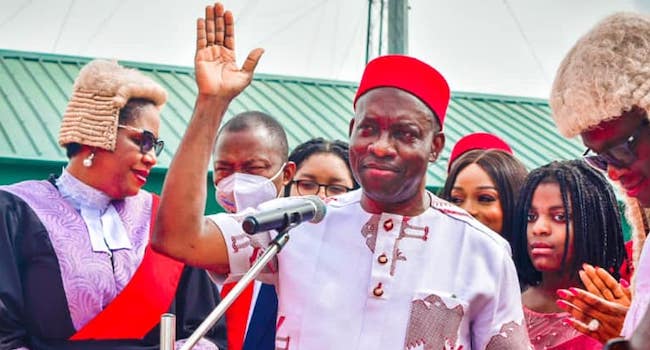
In Nigeria, Anambra is also renowned for being at the forefront of basic education, particularly in science and technology. In Silicon Valley, San Francisco, in 2018, five students from Regina Pacis Model Secondary School, Onitsha, took home gold medals from the World Technovation Challenge.
The Nnamdi Azikiwe University (UNIZIK), Awka, runs a modern teaching hospital in Nnewi with facilities also at Umunya and Ukpo. There is also a faculty of pharmaceutical sciences at Agulu, a School of Preliminary Studies at Mbaukwu, and a College of Agriculture.
Chukwuemeka Odumegwu Ojukwu University, formerly known as Anambra State University, and formerly known as Anambra State University of Science and Technology (ASUTECH), has two campuses, one in Uli, and another at Igbariam.
Other prominent tertiary institutions include; The Federal Polytechnic, Oko, Nwafor Orizu University of Education (formerly known as the Nwafor Orizu College of Education), Nsugbe, Federal College of Education (Technical), Umunze, and Anambra State Polytechnic, formerly known Anambra State College of Agriculture, Mgbakwu.
Furthermore, there are prominent people in Nigeria who are from Anambra state. Some of them are; Professor Chinua Achebe, Chimamanda Ngozi Adichie, Nnamdi Azikiwe Owelle of Onitsha, Professor Kenneth Dike, Ken Erics, P-Square (Peter and Paul Okoye), and Professor Charles Chukwuma Soludo, among others.





